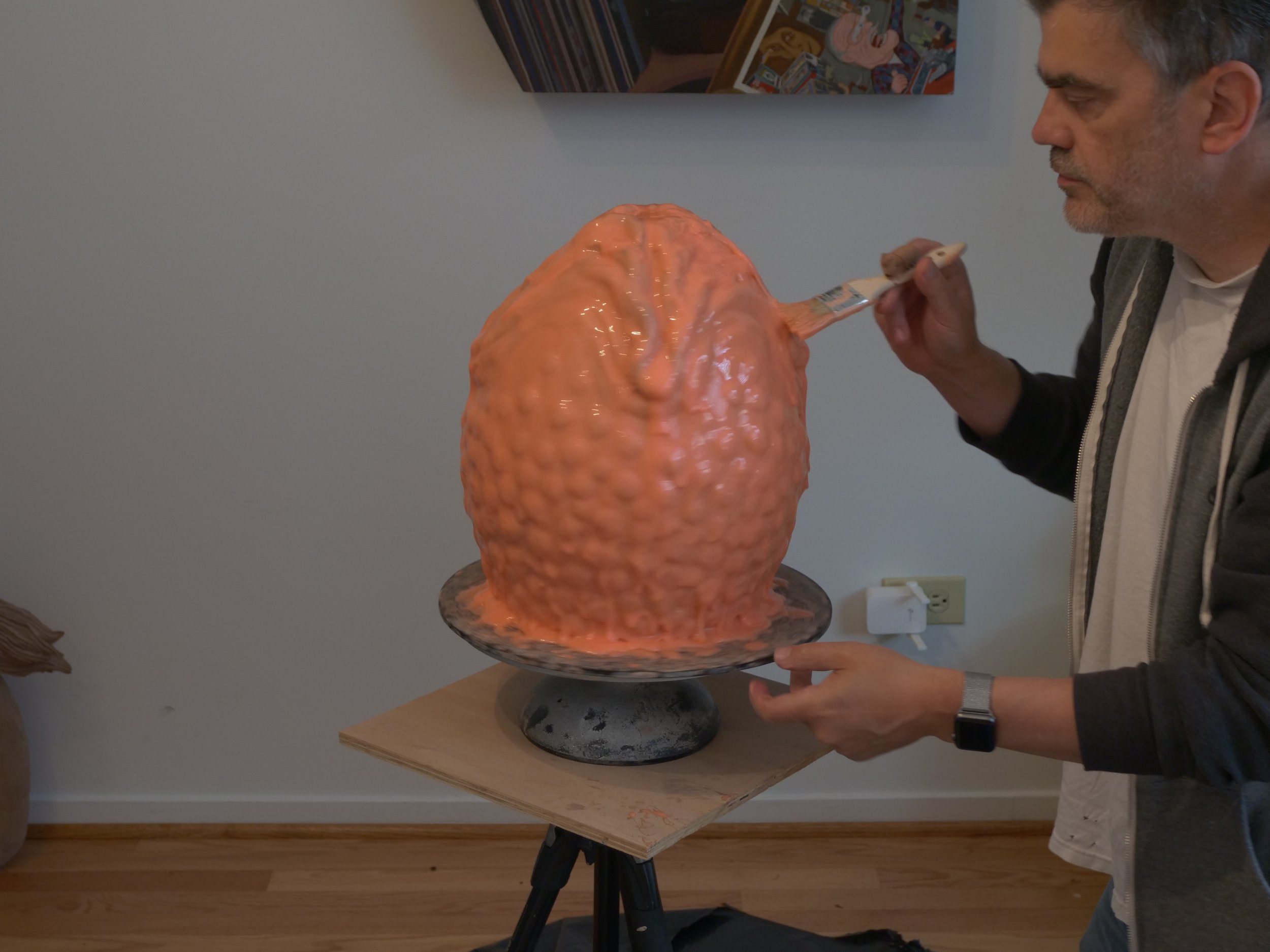Alien Egg Sculpts
When clients challenge our skills and put our experience to the test, we get some amazing results. Nowhere has this been more clear than when we worked with Light Field Lab in San Jose, California. They were looking to demonstrate their advanced holographic technology by showcasing some industrial, educational and entertainment applications.
We worked together to come up with various concepts to showcase holographic optical technologies and build excitement. The first concept we all loved was based on the movie Aliens, or moreover the Aliens franchise. Our goal was to design a large kiosk covered in Alien eggs, that all wiggle and glow with internal light from the Facehuggers growing inside. The central hero egg is an animatronic with 4 servos pulling the ‘lips’ apart, revealing the holographic Facehugger inside that eventually jumps out, scaring the sh** out of the viewer.
As a team, none of us have never worked on anything like this before. Once our concept was approved, we had to build everything from scratch and create our own internal Creature Shop, led by Chris Tedin and Brian Keller. From abstract concepts to concrete physical construction, the M1 team spent many months experimenting with various materials, new construction techniques, and robotics, to create a fully engaging and scary Aliens-based experience, complete with sound effects from the movies and environmental lighting and 4D effects.
After the initial concepts were approved, the process began. Chris Tedin began working in clay to build the 40+ alien eggs that covered the exterior of the kiosk.
For the illusion of forced perspective, he created 2 different sized “closed” eggs, and one large egg that would have mechanical opening “lips”. Brian Keller, was instrumental in helping create these eggs.
When the clay sculpts were finished, the process of casting began. For the closed eggs, Chris used silicone rubber and a fiberglass mother shell to keep the form from distorting. A single mold allowed the eggs to be cast using a single seamless mold.
The larger mechanical egg was a bit more of a challenge. Its size required a less costly approach, so plaster was used to make these molds. A single seamless casting approach was not a viable option.
Once the molds were cured and ready, the casting process began. Some eggs were meant to be internally illuminated, so were cast in a “shell’ technique, using silicone (for softer, “touchable” eggs) and epoxy, for more easily paintable versions. The rest were cast using expandable polyurethane foam, which allowed for quicker fabrication.
Attaching the eggs to the kiosk was a particular challenge. We used threaded rod, and metal straps to do most of the work, as well as epoxy paste and expandable foam.
Author: Chris Tedin





